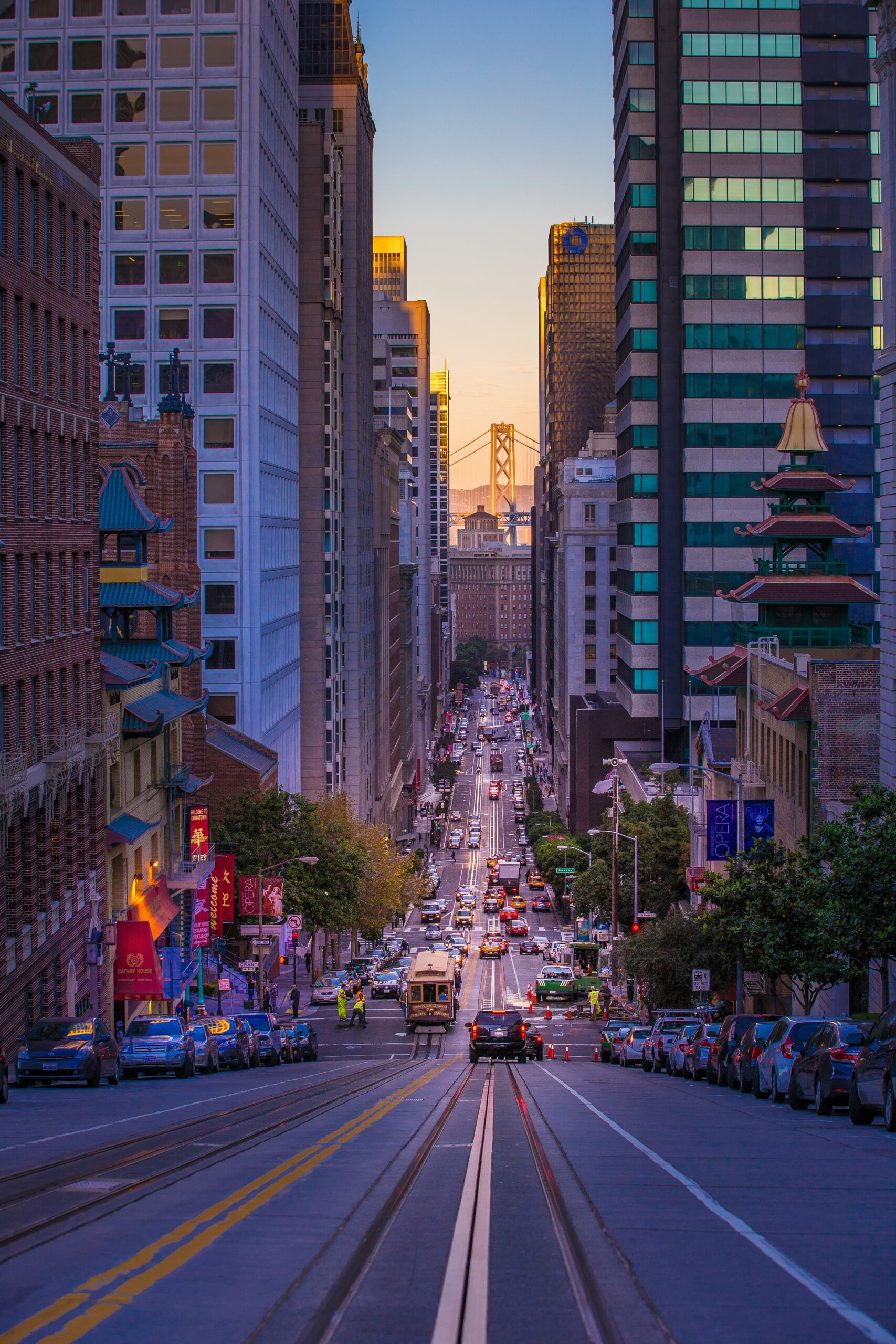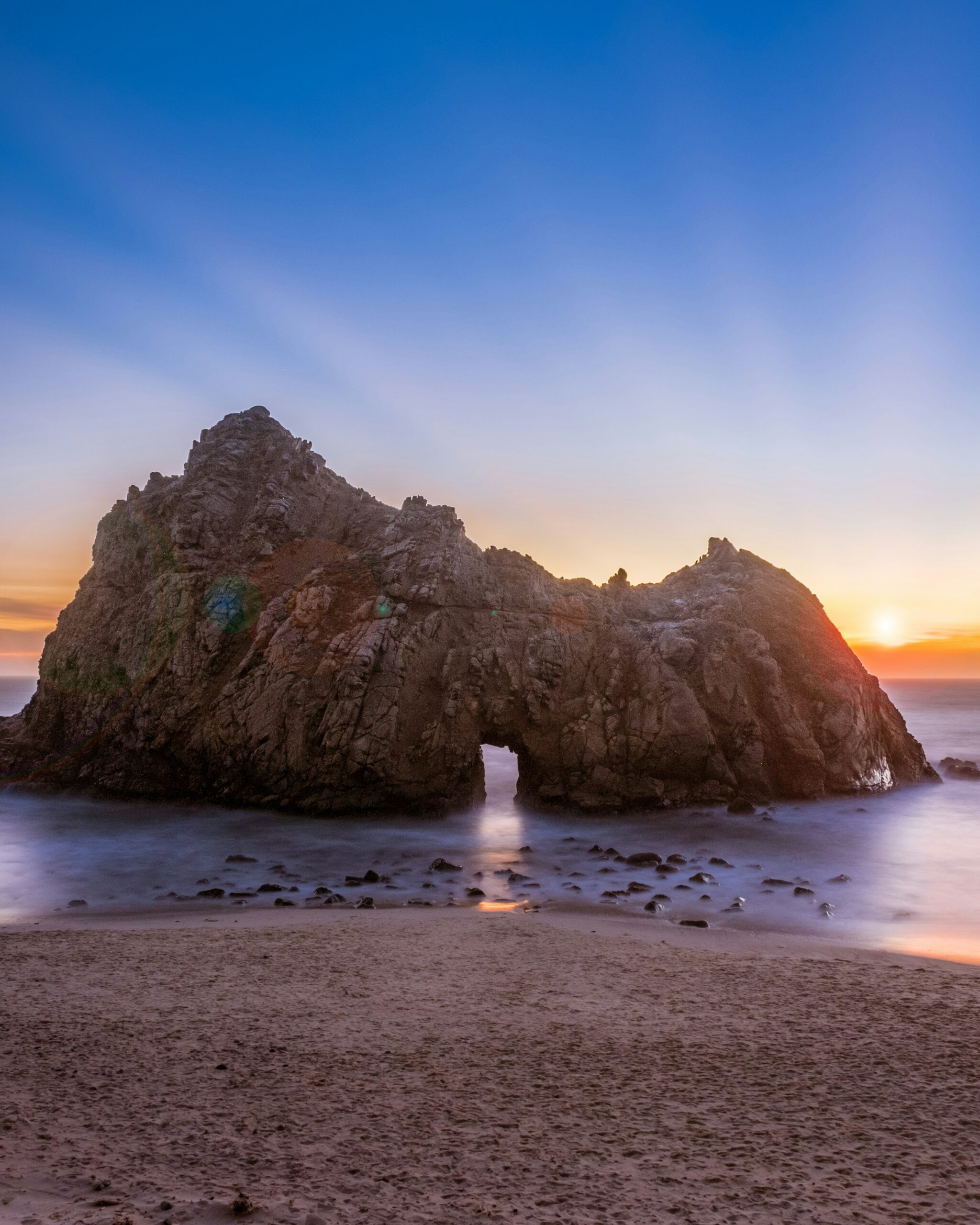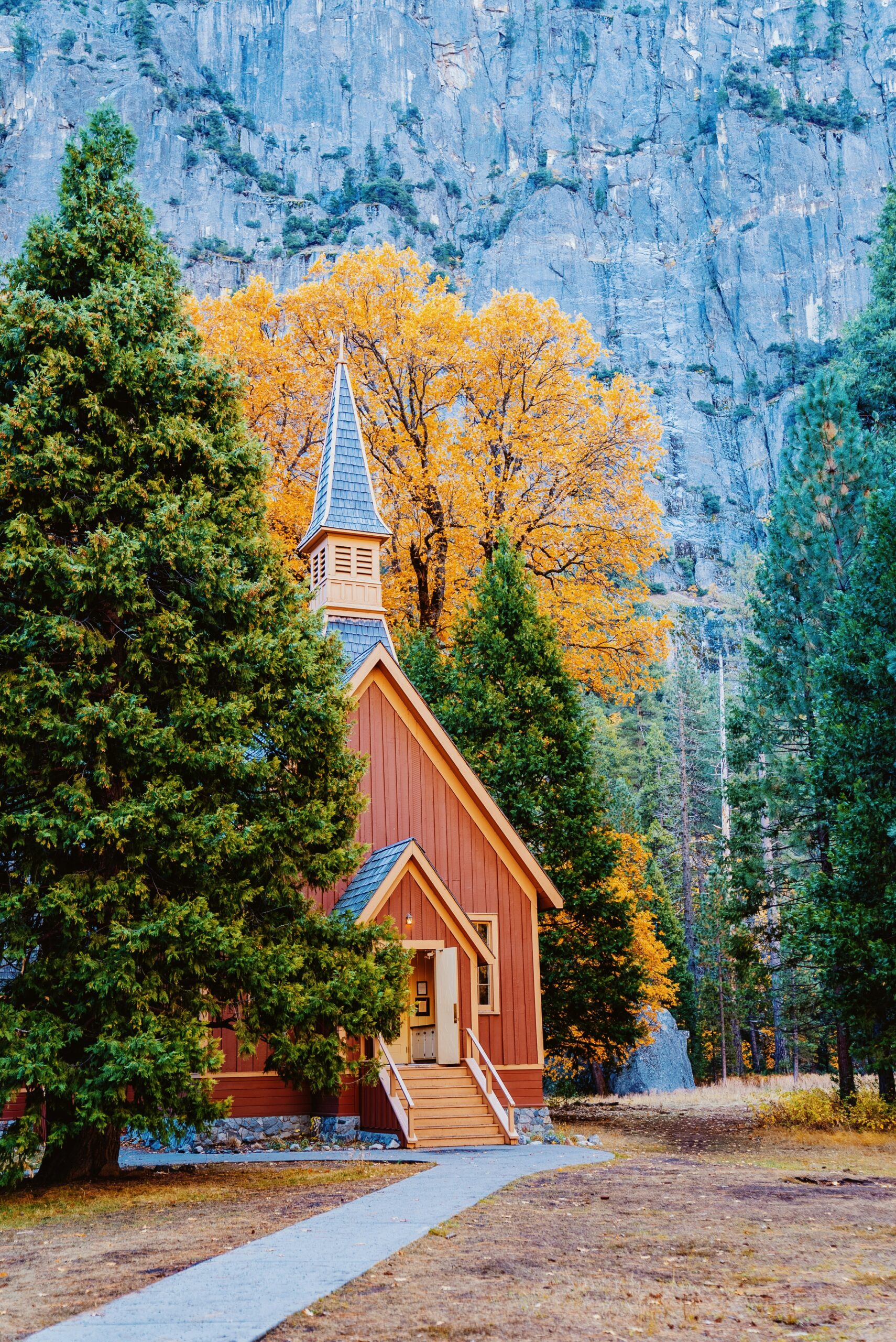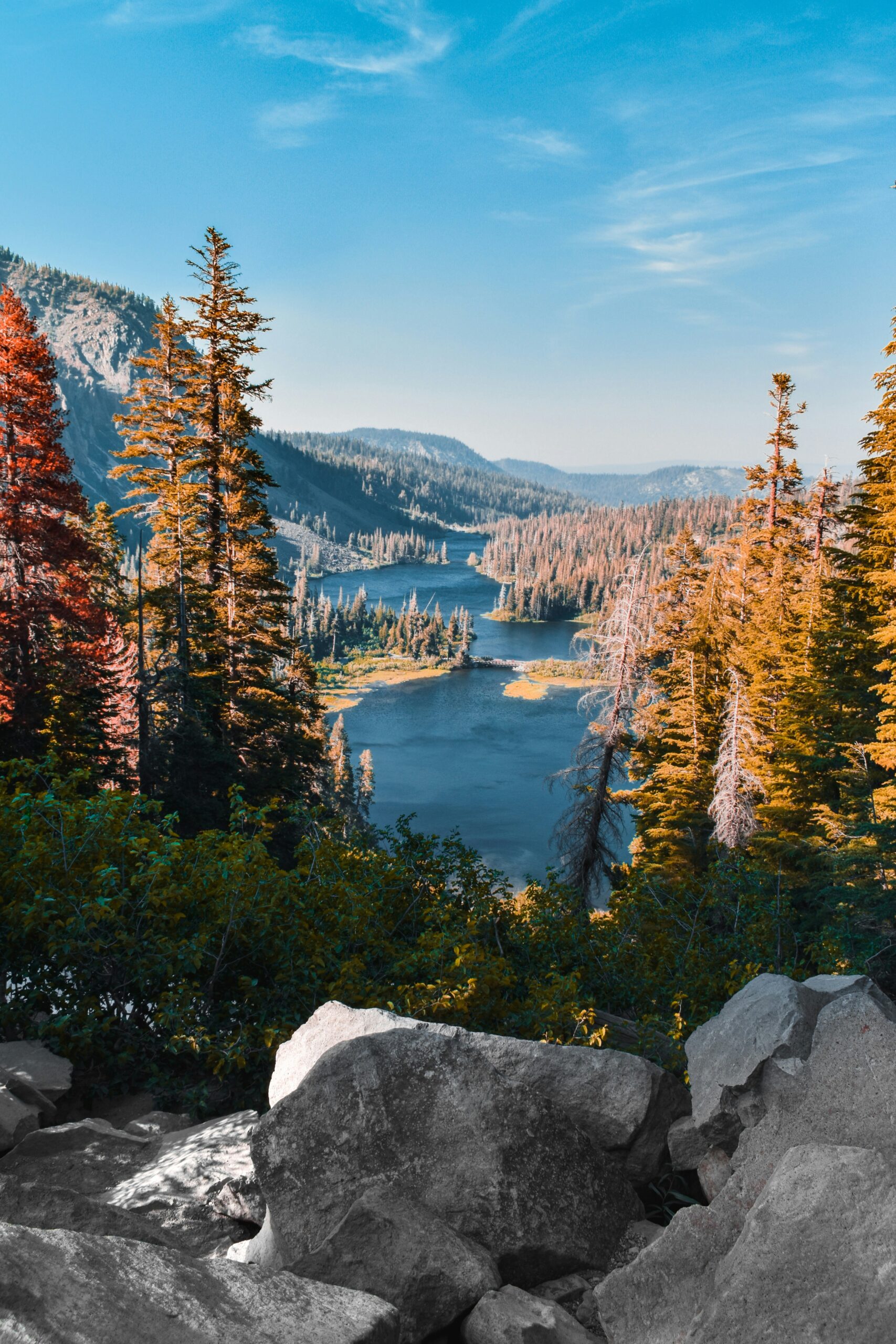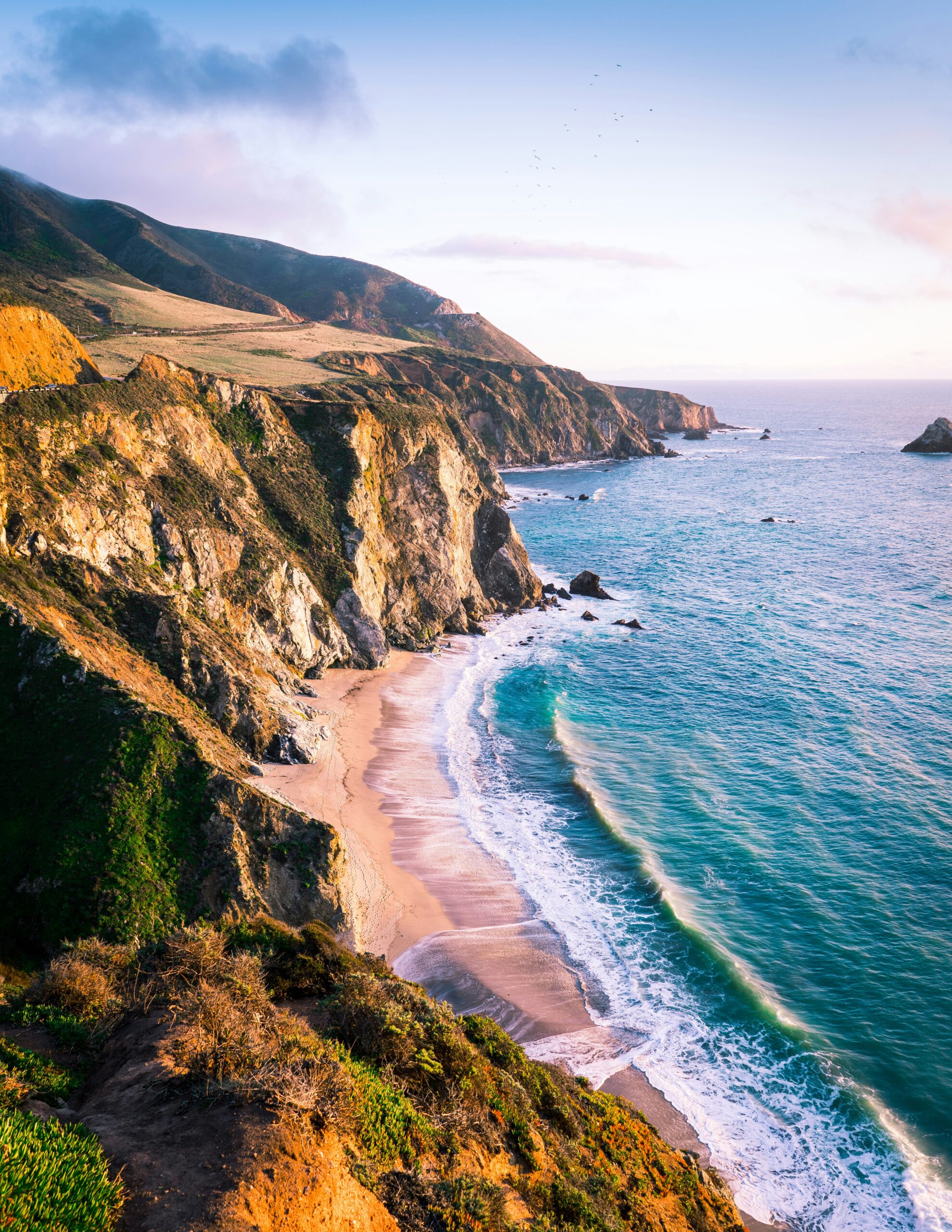30 Things You Never Knew About California: Hidden Gems and Surprising Facts
California, the Golden State, holds a treasure trove of surprises waiting to be discovered. From its rich history to quirky cultural contributions, this diverse land never ceases to amaze. You'll find that California is home to both the highest and lowest points in the continental United States, showcasing its incredible geographical diversity.
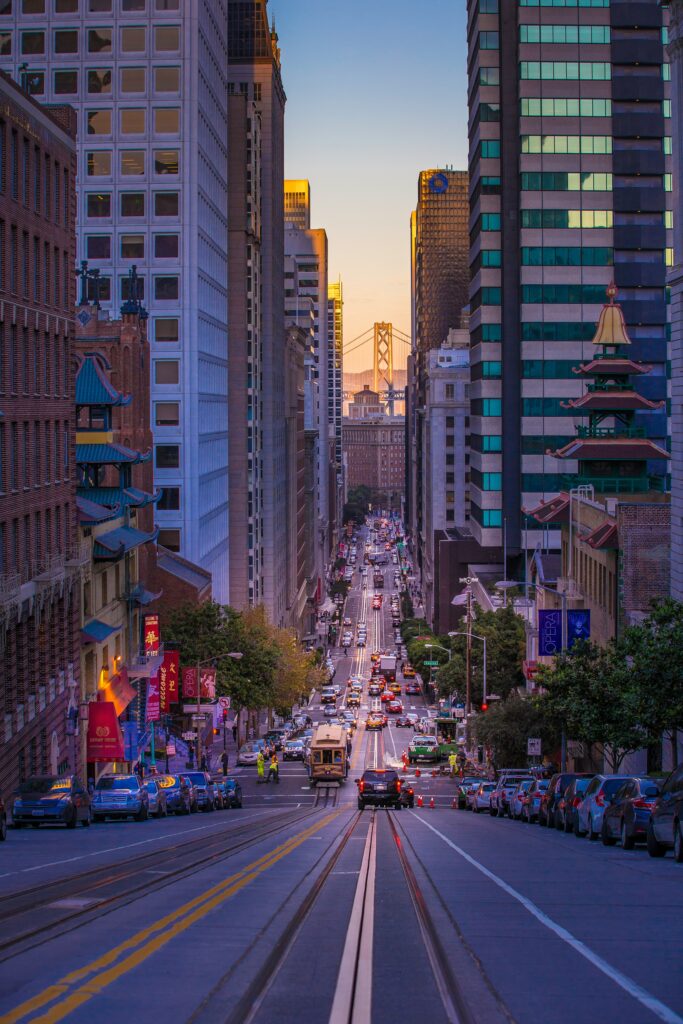
Did you know that fortune cookies, often associated with Chinese cuisine, actually originated in California? Or that the state's official animal, the grizzly bear, is now extinct in the region? These are just a few of the intriguing facts that make California a truly unique place.
The Gold Rush may have put California on the map, but there's so much more to learn about this fascinating state. Get ready to explore 30 surprising things you never knew about California that will deepen your appreciation for this remarkable corner of the world.
30 Things You Never Knew About California: Hidden Gems and Surprising Facts
The Natural Wonders of California
California's diverse landscapes offer an array of breathtaking natural wonders. From towering mountains to vast deserts and ancient forests, the Golden State boasts some of the most awe-inspiring scenery in the United States.
National Parks and Their Majesty
California is home to nine national parks, each showcasing unique natural beauty. Yosemite National Park stands out with its iconic granite cliffs and waterfalls. Half Dome, a massive rock formation, draws visitors from around the world.
Sequoia National Park protects some of the world's largest trees. You'll find yourself dwarfed by the giant sequoias, including the General Sherman Tree, the largest tree on Earth by volume.
Death Valley National Park offers a stark contrast. As the lowest, driest, and hottest place in North America, it features salt flats, sand dunes, and colorful rock formations.
From Beaches to Peaks
California's coastline stretches for over 800 miles, offering countless beautiful beaches. You can surf in San Diego, explore tide pools in Big Sur, or watch the sunset at Santa Monica.
Inland, the Sierra Nevada mountain range dominates the landscape. Mount Whitney, the highest peak in the contiguous United States, challenges hikers and climbers.
The Mojave Desert presents a different kind of beauty. Its vast expanses, Joshua trees, and unique rock formations create an otherworldly atmosphere.
The Unique Flora: Redwoods and Sequoias
California's forests are home to some of the oldest and tallest trees on Earth. The coast redwoods, found in Redwood National Park, can grow over 350 feet tall and live for over 2,000 years.
Giant sequoias, their inland cousins, are the most massive trees by volume. You can walk among these giants in Sequoia and Kings Canyon National Parks.
These ancient forests create unique ecosystems. Ferns carpet the forest floor, while rare species like the California condor soar overhead.
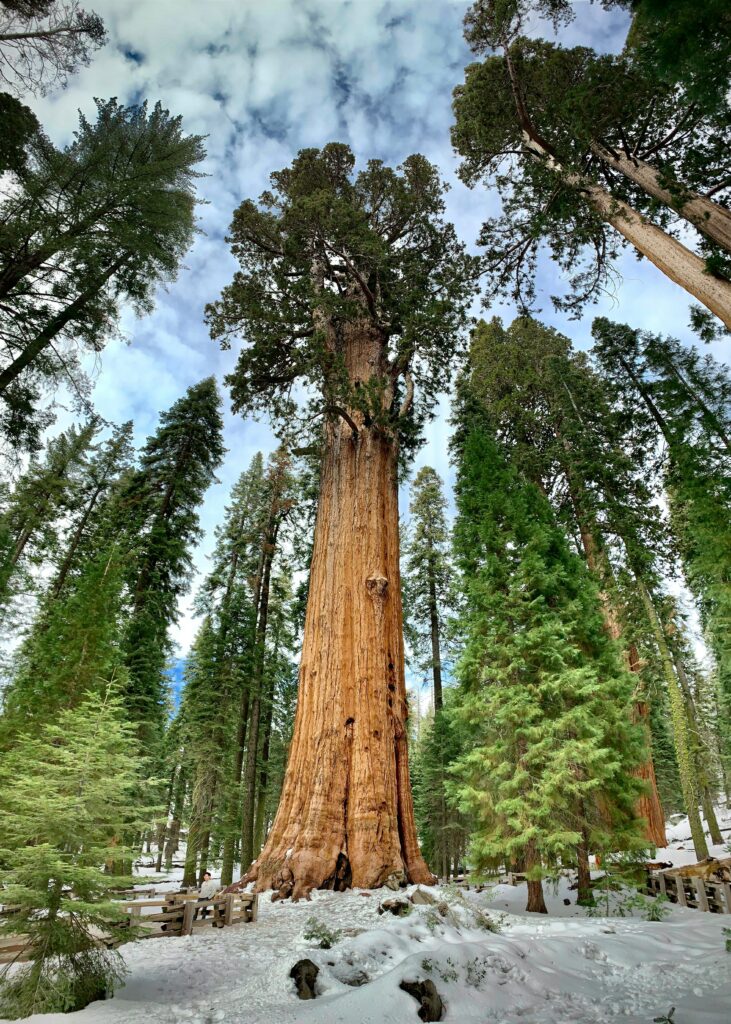
California's Influence on Pop Culture
California's cultural impact spans far beyond its borders, shaping global entertainment, music, and trends. From the glitz of Hollywood to groundbreaking musical movements and innovative fashion, the Golden State has left an indelible mark on popular culture worldwide.
Hollywood: The Movie Capital
Hollywood has been the epicenter of the global film industry for over a century. The iconic Hollywood Sign stands as a symbol of the entertainment world's dreams and aspirations. You'll find major film studios like Warner Bros., Paramount, and Universal scattered across Los Angeles.
The Hollywood Bowl, an outdoor amphitheater, has hosted legendary performances since 1922. It's a testament to California's blend of natural beauty and cultural significance.
Movies produced in Hollywood have shaped global perceptions and influenced fashion, language, and social norms for generations. From classic films to modern blockbusters, California's movie industry continues to captivate audiences worldwide.
Music That Moves: From Otis Redding to The One
California's music scene has been a driving force in popular culture. The state has given rise to diverse genres and iconic artists that have resonated globally.
Otis Redding, though born in Georgia, recorded his hit “(Sittin' On) The Dock of the Bay” in California, inspired by his time in Sausalito. This song became a timeless classic, showcasing California's ability to inspire greatness.
The Beach Boys brought the California surf sound to the world, while bands like Fleetwood Mac and The Eagles defined the laid-back West Coast rock style.
Hip-hop found a powerful voice in California, with West Coast rap revolutionizing the genre. Artists like N.W.A from Compton put California's urban landscapes on the global music map.
The Birthplace of Worldwide Trends
California has been a trendsetter in fashion, technology, and lifestyle. The state's influence extends far beyond its borders, shaping global popular culture.
Silicon Valley has transformed how you interact with technology. Companies like Apple, Google, and Facebook have changed communication, work, and entertainment worldwide.
California's laid-back style has influenced fashion trends globally. From surf wear to bohemian chic, the state's diverse aesthetics have found their way into wardrobes across the planet.
Even toys have felt California's impact. The Barbie doll, created by Ruth Handler in Southern California, became a global phenomenon, influencing generations of children and sparking conversations about beauty standards and representation.

The Historic Gold Rush and Economy
California's economic journey from gold fields to global powerhouse is a tale of transformation. The Gold Rush era laid the foundation for the state's future prosperity, shaping its development into the economic giant it is today.
Echoes of the California Gold Rush
The California Gold Rush began in 1848 when James W. Marshall discovered gold at Sutter's Mill. This event triggered one of the largest mass migrations in human history.
Thousands flocked to California, seeking fortune in its gold-rich lands. You might be surprised to learn that the Gold Rush attracted people from as far away as China and Australia.
The rapid influx of people transformed California's landscape. Boomtowns like San Francisco sprang up overnight. Sacramento, originally a small outpost, grew into the state capital.
Mining techniques evolved quickly. Panning gave way to more sophisticated methods like hydraulic mining, which had significant environmental impacts.
From Gold to a Golden Economy
As gold fever subsided, California's economy diversified. The infrastructure built during the Gold Rush laid the groundwork for future growth.
Agriculture became a major economic driver. The Central Valley, once overlooked by gold seekers, turned into one of the world's most productive farming regions.
California's ports, developed to serve the Gold Rush, became vital for international trade. Today, the ports of Los Angeles and Long Beach are among the busiest in the United States.
The state's entrepreneurial spirit, born in the gold fields, found new expression in the 20th century. Silicon Valley emerged as a global tech hub, driving innovation and economic growth.
Today, California boasts the largest economy of any U.S. state. Its GDP rivals that of entire nations, a testament to its economic diversity and strength.
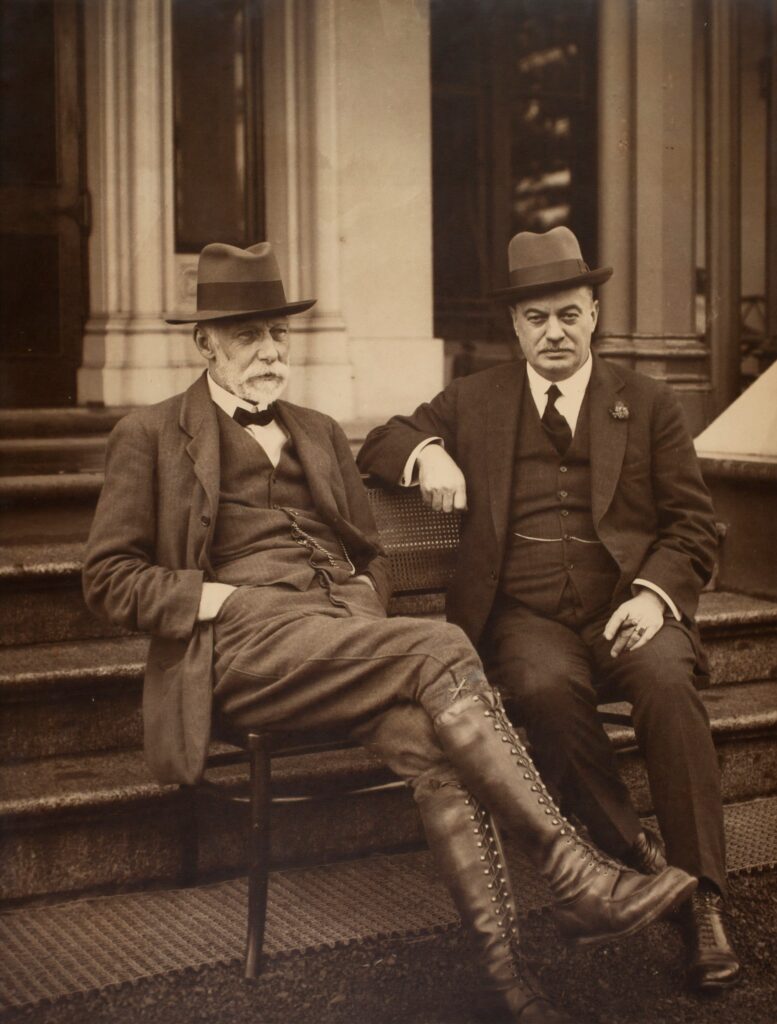
The Geographic Extremes
California's landscape boasts remarkable contrasts, from towering peaks to scorching deserts. The state's diverse geography creates unique challenges and opportunities for residents and visitors alike.
Highest and Lowest Points in Contiguous USA
California holds the distinction of housing both the highest and lowest points in the contiguous United States. Mount Whitney, standing tall at 14,505 feet, is the highest peak in the lower 48 states. You can find it in the Sierra Nevada mountain range.
At the opposite extreme, Badwater Basin in Death Valley sits at 282 feet below sea level, making it the lowest point in North America. This stark contrast in elevation occurs within just 85 miles of each other.
Death Valley itself is a land of extremes. It holds the record for the hottest air temperature ever recorded on Earth at 134°F (56.7°C).
The Climate Spectrum
California's climate is as diverse as its landscape. You'll find a wide range of weather conditions across the state.
In the north, you can experience subarctic climates with cold winters and mild summers. The central valleys offer a Mediterranean climate, perfect for agriculture.
Southern California boasts a semi-arid climate with warm, dry summers and mild winters. The state's varied climate allows for both summer and winter recreational activities.
You can ski in the mountains and surf at the beach on the same day, a unique feature that attracts millions of visitors annually.
Living on the Edge: Earthquakes and Fault Lines
California's location on the Pacific Ring of Fire makes it prone to seismic activity. The San Andreas Fault, stretching 750 miles through the state, is the primary source of earthquakes.
You'll find numerous smaller faults throughout California, contributing to frequent seismic events. The state experiences about 10,000 earthquakes each year, though most are too small to feel.
To cope with this reality, California has implemented strict building codes and early warning systems. As a resident or visitor, you should familiarize yourself with earthquake safety protocols.
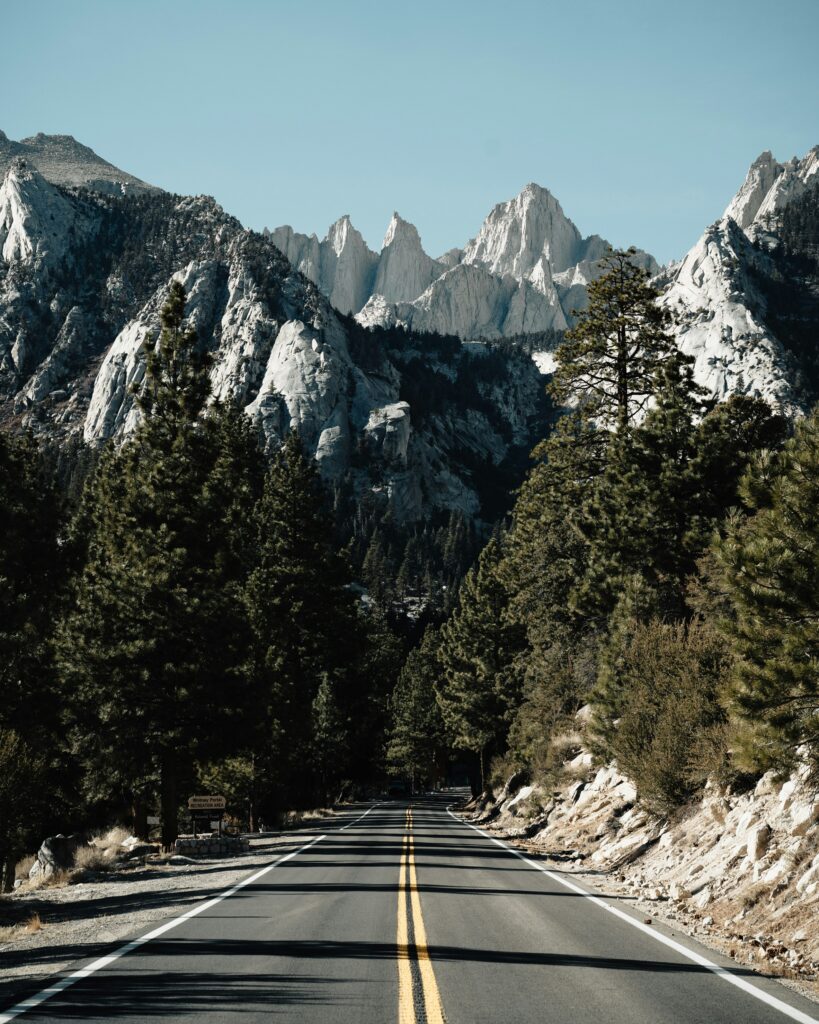
Iconic Landmarks and Infrastructures
California boasts some of the most recognizable landmarks and infrastructure in the world. These iconic structures and symbols represent the state's rich history, innovative spirit, and natural beauty.
Spanning the Bay: The Golden Gate Bridge
The Golden Gate Bridge stands as an engineering marvel and a symbol of San Francisco. This stunning suspension bridge stretches 1.7 miles across the Golden Gate strait, connecting San Francisco to Marin County.
You'll be amazed by its distinctive International Orange color, chosen to complement the natural surroundings and enhance visibility in fog. The bridge's art deco-inspired towers rise 746 feet above the water, creating an awe-inspiring silhouette against the bay.
Walking or cycling across the bridge offers breathtaking views of the city skyline and the Pacific Ocean. For the best photo opportunities, head to Battery Spencer or Crissy Field.
Streets and Symbols: Lombard Street and Others
Lombard Street in San Francisco is known as the “crookedest street in the world.” This one-block section features eight hairpin turns, creating a unique zigzag pattern down the steep hill.
You'll find beautifully landscaped gardens lining the street, with vibrant flowers blooming year-round. The street's design was originally implemented to reduce the hill's natural 27% grade, making it safer for both pedestrians and vehicles.
Other iconic streets include Hollywood Boulevard with its Walk of Fame and Rodeo Drive in Beverly Hills, known for luxury shopping and celebrity sightings.
Statewide Symbols of Pride
The California Republic flag, also known as the Bear Flag, serves as a powerful symbol of the state's history and identity. You'll see this distinctive flag featuring a grizzly bear and red star flying proudly across California.
The flag dates back to 1846 when a group of American settlers in Sonoma briefly declared California an independent republic. Today, it represents California's independent spirit and rich heritage.
Other statewide symbols include the California poppy as the official state flower and the majestic redwood as the state tree. These natural icons reflect the diverse landscapes and ecosystems found throughout the Golden State.

California's Agricultural Bounty
California's diverse climate and fertile soils support an incredible variety of crops. The state leads the nation in producing many fruits, nuts, and vegetables, while also excelling in wine production.
The Avocado and Almond Journeys
California produces nearly all of the nation's almonds and artichokes. You'll find vast almond orchards stretching across the Central Valley, where ideal growing conditions yield over 80% of the world's almonds.
Avocados thrive in Southern California's Mediterranean climate. Fallbrook, known as the “Avocado Capital of the World,” celebrates this creamy fruit with an annual festival. You can experience the avocado's journey from grove to plate in many farms and markets throughout the region.
California's agricultural prowess extends beyond these two crops. The state's farmers grow over 400 commodities, supplying a significant portion of the country's produce.
World-Leading Wine Production
When you think of California agriculture, don't forget about its renowned wine industry. The state produces 81% of all U.S. wines, with over 3,900 wineries dotting its landscape.
From Napa Valley to Sonoma County, you'll find a rich tapestry of vineyards producing world-class wines. The diverse microclimates allow for cultivation of various grape varieties, resulting in an impressive range of wine styles.
You can explore these wine regions through scenic drives, guided tours, and tastings. Many wineries offer behind-the-scenes glimpses into the winemaking process, from grape to glass.
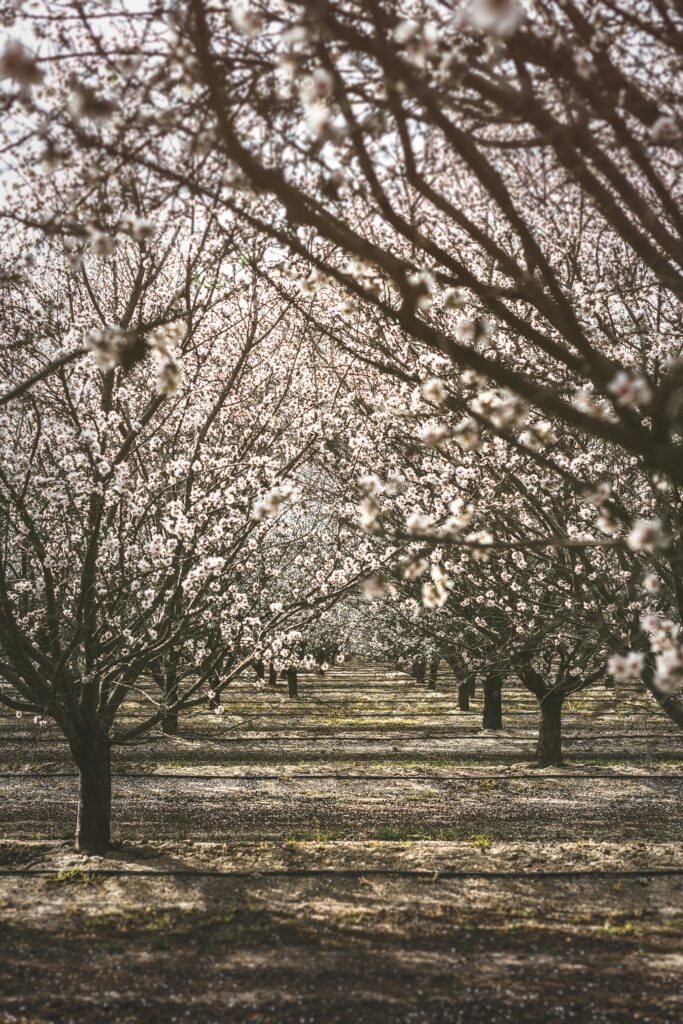
Technological Innovation and Silicon Valley
California's Silicon Valley stands at the forefront of global technological advancement. This region has reshaped modern life through groundbreaking innovations and entrepreneurial ventures.
The Hub of High-Tech
Silicon Valley, located in the southern San Francisco Bay Area, has become synonymous with cutting-edge technology. You'll find a unique ecosystem here that fosters innovation and entrepreneurship.
The area's high concentration of tech companies attracts top talent from around the world. Silicon Valley's influence extends far beyond California, driving global technological progress in fields like artificial intelligence, autonomous vehicles, and biotechnology.
Major tech giants like Apple, Google, and Facebook call this region home. These companies, along with countless others, continue to push the boundaries of what's possible in the digital age.
Groundbreaking Startups and Companies
Silicon Valley's vibrant startup culture sets it apart from other tech hubs. You'll find a thriving ecosystem that supports new ventures from idea to execution.
The region boasts a high density of venture capital firms ready to fund promising startups. This financial backing, combined with a pool of skilled professionals, creates an ideal environment for innovation.
Many world-changing companies began as small startups in Silicon Valley garages or dorm rooms. The area continues to produce groundbreaking startups in fields like clean energy, space technology, and virtual reality.
Silicon Valley's success has inspired similar tech hubs worldwide, but its unique blend of talent, resources, and entrepreneurial spirit remains unmatched.

Sporting Events and Outdoor Lifestyle
California's reputation for athletic excellence and outdoor adventures is well-deserved. The state has hosted multiple Olympic Games and pioneered iconic sports like surfing and skateboarding.
California and the Olympics
California has proudly hosted the Olympic Games twice in Los Angeles – in 1932 and 1984. The city is set to make history again as it prepares to host the 2028 Summer Olympics.
Los Angeles will become the third city ever to host the Olympics three times. This reflects California's enduring importance in the world of sports.
The 1984 Games were particularly notable for turning a profit, unlike many other Olympic host cities. This success helped revitalize the Olympic movement globally.
Surf, Skate, and Adventure
California's outdoor lifestyle has given birth to some of the world's most popular board sports. Surfing, deeply ingrained in California culture, originated with Hawaiian royalty but found its modern form on California's beaches.
Skateboarding, another California invention, emerged in the 1950s when surfers sought ways to “surf” on land. Today, both sports are Olympic events, showcasing California's influence on global athletics.
The state's diverse landscape offers endless opportunities for outdoor enthusiasts. From hiking in Yosemite to skiing in Lake Tahoe, you can experience the quintessential California dream through its outdoor adventures.
California's commitment to preserving natural spaces ensures these activities remain accessible, allowing you to embrace the outdoor lifestyle that defines the Golden State.

Diverse Cultural Mosaic
California's cultural landscape is a vibrant tapestry of diverse influences. This unique blend shapes the state's identity and offers residents and visitors an enriching experience.
The Melting Pot of Societies
California's cultural vibrancy is a product of its rich diversity. You'll find a mix of influences from Native American, European, Asian, African, and Latin American cultures throughout the state.
Los Angeles and the San Francisco Bay Area are prime examples of this diversity. In these metropolitan hubs, you can explore neighborhoods like Little Tokyo, Chinatown, and Little Ethiopia.
European settlers, particularly Spanish colonists, left a lasting impact on California's culture. You can still see their influence in the state's architecture, cuisine, and place names.
California's demographics continue to evolve. Today, you'll find that no single ethnic group constitutes a majority in the state, creating a truly multicultural society.
Cultural Festivals and Celebrations
California's diversity comes to life through its numerous cultural festivals and celebrations. You can experience a wide range of events throughout the year.
In San Francisco, you can join the colorful Chinese New Year parade, one of the largest outside of Asia. Los Angeles hosts the vibrant Nisei Week Japanese Festival in Little Tokyo.
Statewide, you can participate in Cinco de Mayo celebrations, showcasing Mexican-American culture. The California State Fair in Sacramento highlights the state's agricultural heritage and cultural contributions.
Many cities organize multicultural food festivals where you can sample cuisines from around the world. These events offer a delicious way to explore California's diverse culinary landscape.

Environmental Efforts and Nature Conservation
California leads the nation in environmental protection and sustainable practices. The state's diverse ecosystems and natural wonders inspire innovative conservation strategies and green technologies.
Protecting the Natural Habitats
California boasts an impressive network of national parks and protected areas. You'll find iconic landscapes like Yosemite, Joshua Tree, and Redwood National Park.
The state's commitment to biodiversity is evident in its 30×30 initiative, aiming to conserve 30% of California's land and coastal waters by 2030. This ambitious goal addresses the urgent need to protect habitats and wildlife.
In the Mojave Desert, conservation efforts focus on preserving unique flora and fauna. You can witness firsthand the delicate balance of desert ecosystems and the importance of their protection.
Renewable Energy and Sustainability Practices
California's push for green technology is reshaping its energy landscape. You'll see solar panels dotting rooftops and vast wind farms harnessing clean power.
The state's geothermal fields provide a significant source of renewable energy. The Geysers, north of San Francisco, is one of the world's largest geothermal complexes.
California's sustainability practices extend beyond energy production. You'll notice electric vehicle charging stations becoming increasingly common, reflecting the state's commitment to reducing emissions.
Water conservation is a top priority. You'll encounter drought-resistant landscaping and innovative irrigation systems throughout urban areas.

